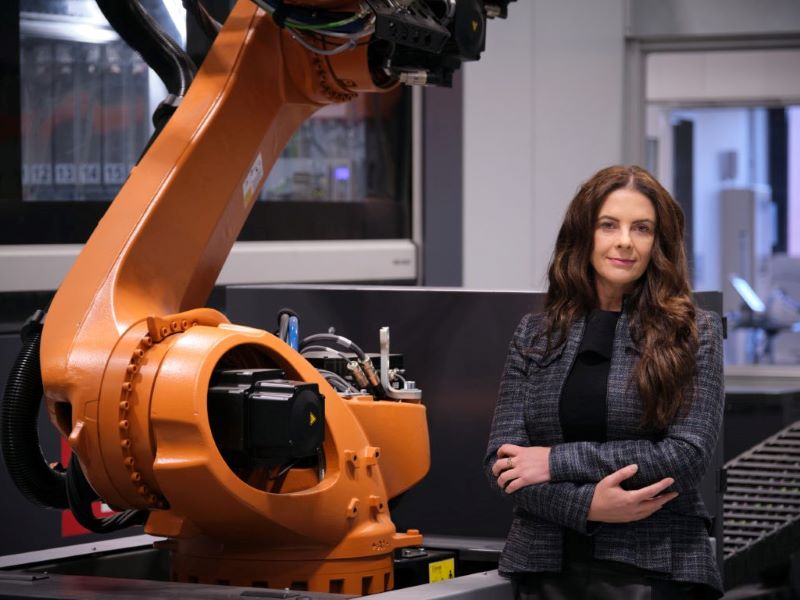The government appointments to the National Robotics Strategy Advisory Committee were announced on Tuesday, with CSIRO chief scientist Professor Bronwyn Fox to lead an eight-person group of field experts and worker and investor representatives.
Professor Fox is an engineer with a background in advanced manufacturing and translating research into industrial outcomes.
Along with Industry minister Ed Husic’s support for more locally made production line equipment, Tuesday’s announcement suggests the national plan will look well beyond Australia’s traditional strengths of field robotics.

The committee will guide the development of Australia’s first National Robotics Strategy to take advantage of the nation’s research excellence and leading applications like field robotics, automation and advanced manufacturing.
Industry minister Ed Husic has asked for the strategy to be finalised by March next year, just months after a similar national plan for quantum technologies is revealed and as the government’s approach to AI is revamped.
The timing allows the new government’s critical technology plans to get underway in earnest, with massive new co-investment from Labor’s $15 billion National Reconstruction Fund expected to flow from July.
The National Robotics Strategy Advisory Committee members are:
- Associate Professor Catherine Ball, Australian National University
- Mr Andrew Dettmer, national president, Australian Manufacturing Workers’ Union
- Professor Hugh Durrant-Whyte, NSW chief scientist & engineer
- Professor Bronwyn Fox (chair), chief scientist, CSIRO
- Dr Sue Keay, founder and chair, Robotics Australia Group
- Professor Simon Lucey, director, Australian Institute of Machine Learning
- Associate Professor Julia Powles, director, UWA Minderoo Tech & Policy Lab
- Mr Mike Zimmerman, partner, Main Sequence Ventures
“We have brought together some of the nation’s leading robotics and technology thinkers and practitioners to guide the way we develop and use robotics,” Mr Husic said in a statement.
“Australia has a lot of the key elements that can help in the development of national robotics capabilities: our people, research and manufacturing skills.”
Australia competes globally on robotics research and certain capabilities, but the technology has not taken hold across the wider economy.
According to Robotics Australia, the country’s robot population density — a measure of the number of industrial robots per 10,000 employees, is 75, while the world average is 113.
The peak body has warned Australia is “being left behind” right as the technology evolves into a much more useful tool.
Robotics Australia founder Dr Sue Keay, who led the development of industry roadmaps before the federal government stepped in this year, is now on the advisory committee.
She is joined by Professor Hugh Durrant-Whyte from Sydney University and now the NSW chief scientist and engineer, who pioneered robotics software now used commonly around the world for unmapped environments.
Chair of the new committee, Professor Fox spent six years at Swinburne University before joining the science agency, including as the head of its Factory of the Future and Manufacturing Futures Research Institute.
Mr Husic said robotics companies were estimated to be worth $18 billion in annual revenue to the Australian economy in 2021, up from $12 billion in 2018. He assembled the committee to take further advantage.
“And while we’re recognised as possessing strength in field robotics, we can do better, across a wider range of activities.
“We also want to ensure that we develop our robotic strength alongside human skills, delivering secure well-paid jobs.”
Do you know more? Contact James Riley via Email.

